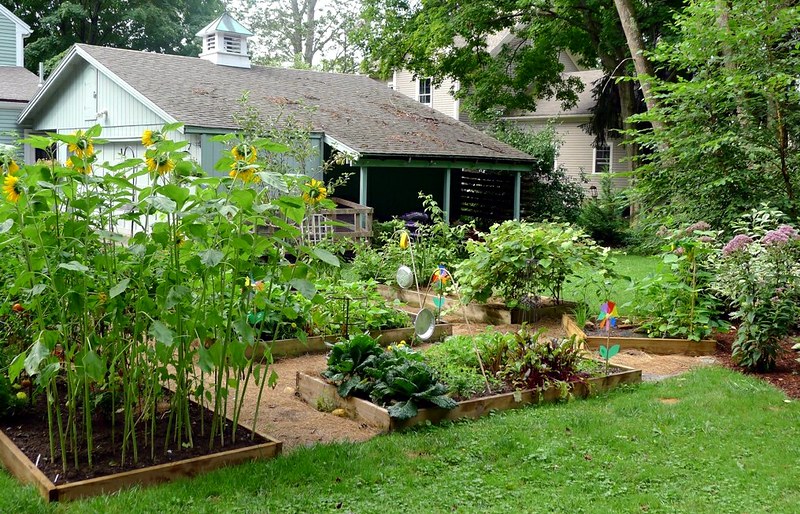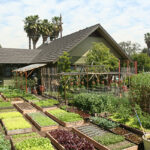For many, the dream of a self-sustaining lifestyle begins with organic gardening at home. This practice not only provides fresh and healthy produce but also contributes to a healthier planet. Whether you’re a seasoned gardener or a curious beginner, starting an organic garden at home can be a rewarding experience.
In this article, we explore the essentials of organic gardening, providing you with the knowledge and tools needed to create a thriving garden right in your backyard. With a focus on sustainability and natural methods, you’ll learn how to nurture your plants without relying on synthetic chemicals.

Understanding Organic Gardening
Before diving into the practical aspects, it’s crucial to understand what organic gardening entails. This method of gardening avoids synthetic fertilizers and pesticides, instead emphasizing natural processes and biodiversity. The goal is to create a balanced ecosystem where plants, soil, and wildlife coexist harmoniously.
The Benefits of Organic Gardening
There are numerous benefits to embracing organic gardening at home. Not only does it yield healthier produce, but it also enhances soil fertility, encourages beneficial insects, and reduces environmental pollution.
Preparing Your Organic Garden
Starting an organic garden requires careful planning and preparation. Begin by selecting a suitable location with adequate sunlight and drainage. Next, test your soil to determine its pH level and nutrient content. This information will guide you in amending the soil with organic matter such as compost or aged manure.
Choosing the Right Plants
Selecting the right plants is a critical step in organic gardening. Consider factors such as climate, soil type, and available space. Opt for native species and heirloom varieties, which are often more resilient and better adapted to local conditions. This approach supports biodiversity and reduces the need for external inputs.
Companion Planting
Companion planting is a technique that involves growing certain plants together to enhance growth and deter pests. For example, marigolds are known to repel nematodes, while basil can improve the flavor and growth of tomatoes. Incorporating companion planting into your organic garden can lead to healthier plants and increased yields.
Seed Selection and Sowing
Choosing high-quality seeds is essential for a successful organic garden. Look for certified organic seeds, which are grown without synthetic chemicals. When sowing seeds, follow the recommended planting depth and spacing guidelines to ensure proper growth and development.
Soil Management in Organic Gardening
Healthy soil is the foundation of a successful organic garden. Focus on building rich, fertile soil by incorporating organic matter and practicing crop rotation. These methods improve soil structure, enhance nutrient availability, and reduce pest and disease pressure.
Composting for Nutrient-Rich Soil
Composting is a natural process of recycling organic waste into nutrient-rich soil amendments. By adding compost to your organic garden, you can improve soil fertility, enhance water retention, and reduce the need for chemical fertilizers.
Mulching Techniques
Mulching is an effective way to conserve moisture, suppress weeds, and regulate soil temperature in your organic garden. Use organic materials such as straw, grass clippings, or wood chips to cover the soil surface. This practice not only benefits your plants but also enriches the soil as the mulch breaks down over time.
Watering Wisely
Proper watering is crucial for maintaining a healthy organic garden. Water deeply and infrequently to encourage deep root growth. Use techniques such as drip irrigation or soaker hoses to minimize water waste and reduce the risk of fungal diseases.
Rainwater Harvesting
Collecting rainwater is an eco-friendly way to supply your organic garden with water. Install rain barrels to capture runoff from your roof, and use the collected water to irrigate your plants. This practice not only conserves water but also reduces your environmental footprint.
Pest and Disease Management
In organic gardening, pest and disease management relies on prevention and natural control methods. Encourage beneficial insects, such as ladybugs and predatory wasps, to help control pest populations. Use organic sprays, such as neem oil or insecticidal soap, as a last resort.
Maintaining Plant Health
Keeping your plants healthy is the best defense against pests and diseases. Provide adequate nutrients, water, and sunlight to ensure strong, resilient plants in your organic garden. Regularly inspect your plants for signs of stress or damage, and take appropriate action when needed.
Natural Pest Deterrents
Incorporate natural pest deterrents into your organic garden to minimize pest damage. Garlic, onion, or chili pepper sprays can deter insects, while barriers like row covers can protect plants from larger pests. These methods help maintain a healthy and balanced ecosystem.
Seasonal Care and Maintenance
Successful organic gardening at home involves ongoing care and maintenance. Adjust your practices according to the seasons, such as planting cool-season crops in the spring and fall. Regularly rotate your crops to prevent soil depletion and reduce pest and disease buildup.
Harvesting and Storage
Proper harvesting techniques ensure the quality and longevity of your produce. Harvest fruits and vegetables at their peak ripeness, and store them in optimal conditions to extend their shelf life. Implementing these practices in your organic garden will help you enjoy the fruits of your labor for longer periods.
Planning for the Next Season
As the growing season comes to an end, take time to reflect on your successes and challenges. Use this information to plan and improve your organic garden for the next season. Consider experimenting with new crops or techniques to enhance your gardening skills and knowledge.
Joining the Organic Gardening Community
Engaging with fellow gardeners can enrich your organic gardening journey. Join local gardening clubs or online forums to share experiences, tips, and ideas. This sense of community can provide valuable support and inspiration as you cultivate your organic garden.
For more detailed guidance, check out the Beginning Homesteading Guide. Additionally, you can learn more about what homesteading entails in the Homesteading at Home article.
Conclusion: Embrace the Rewards of Organic Gardening
Embarking on the journey of organic gardening at home is a fulfilling and rewarding endeavor. By adopting sustainable practices and nurturing your plants with care, you contribute to a healthier environment and enjoy the benefits of fresh, homegrown produce. As you continue to learn and grow, your organic garden will thrive, providing enjoyment and sustenance for years to come.

Frequently Asked Questions
What is the best soil for organic gardening?
The best soil for organic gardening is rich in organic matter, has good drainage, and maintains a balanced pH. Amending your soil with compost and other natural materials can help achieve these conditions.
How can I naturally improve soil fertility?
Improving soil fertility naturally involves adding compost, practicing crop rotation, and incorporating cover crops. These methods enhance soil structure, nutrient availability, and overall health.
What are some common organic gardening pests?
Common pests in organic gardening include aphids, caterpillars, slugs, and snails. Employing natural pest control methods, such as encouraging beneficial insects and using organic sprays, can effectively manage these pests.





